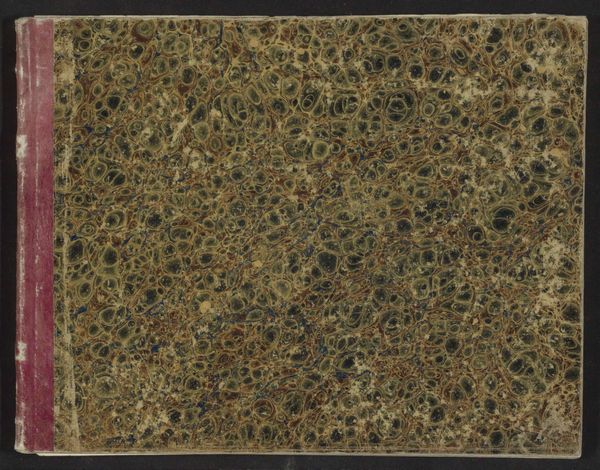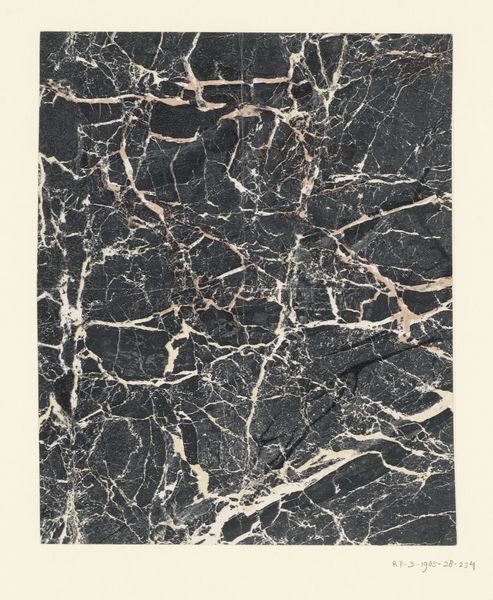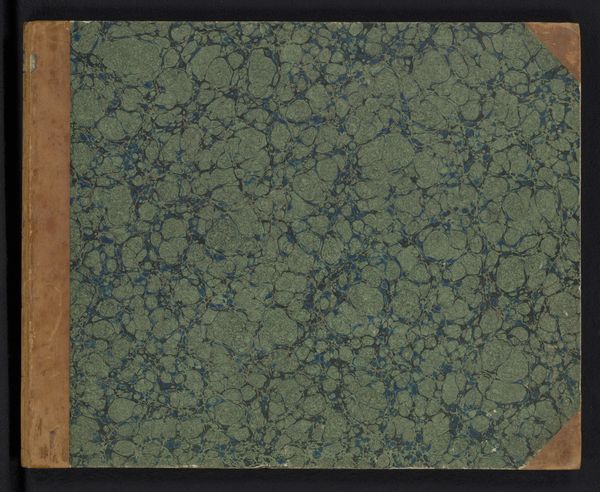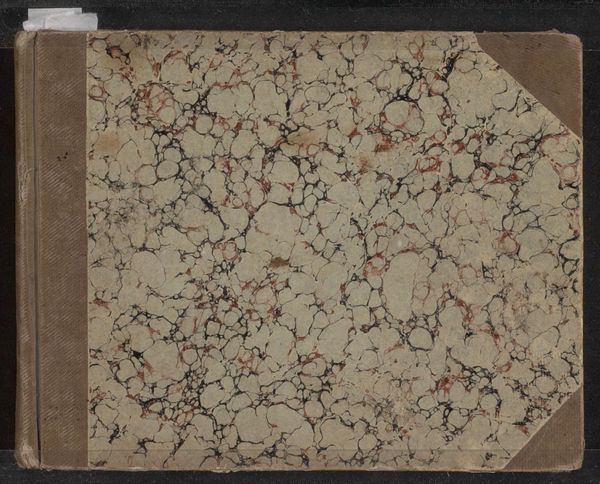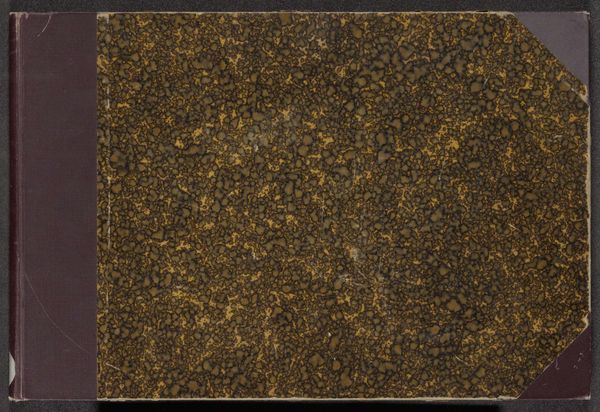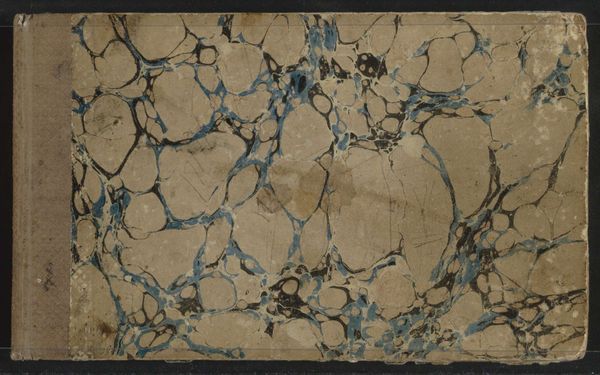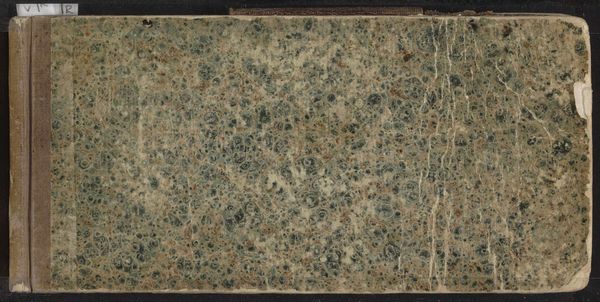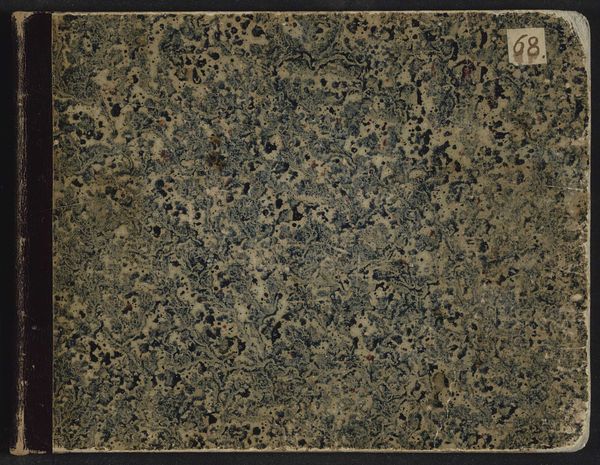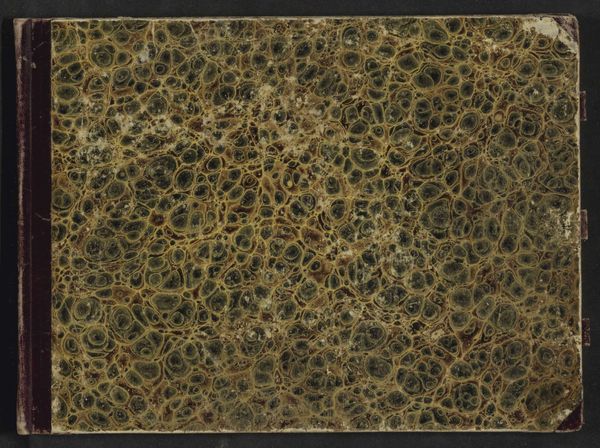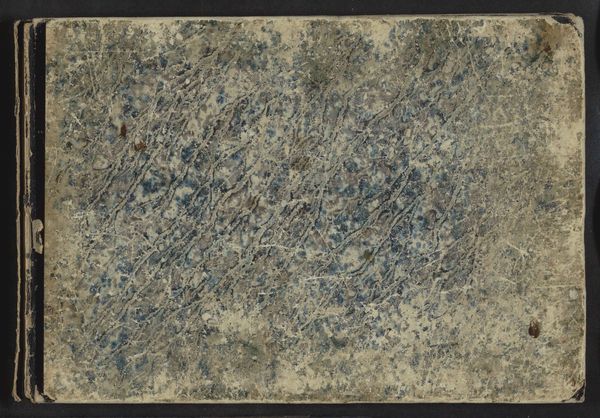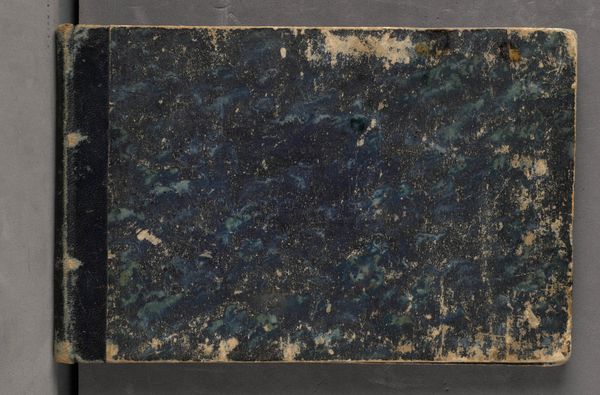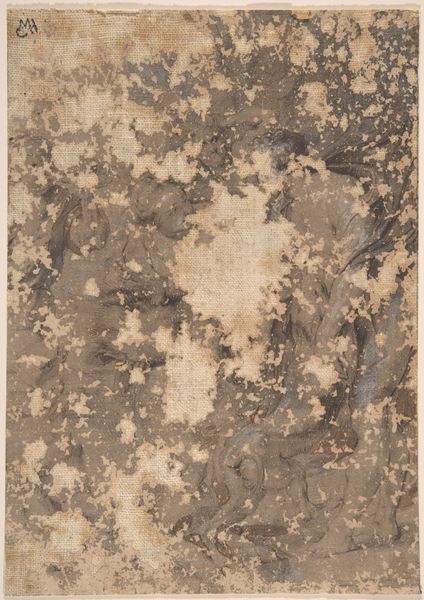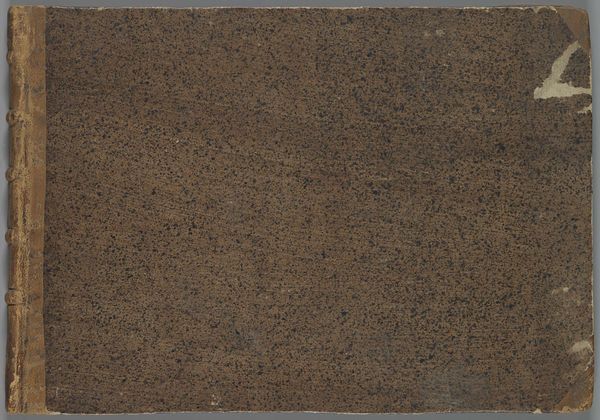
Album met het eerste deel van het prentwerk: Le Theatre de la Guerre, dans les Pays-Bas, 1696 1696
0:00
0:00
nicolasdefer
Rijksmuseum
graphic-art, print
#
graphic-art
#
natural stone pattern
#
naturalistic pattern
#
baroque
# print
#
textured
#
detailed texture
#
pattern
#
abstract pattern
#
organic pattern
#
texture
#
natural texture
#
layered pattern
#
organic texture
Dimensions: height 310 mm, width 390 mm, thickness 120 mm
Copyright: Rijks Museum: Open Domain
Editor: This is the cover of an album from 1696, specifically, "Album met het eerste deel van het prentwerk: Le Theatre de la Guerre, dans les Pays-Bas" by Nicolas de Fer. It’s made of prints and the swirling patterns give it a very… tactile feel, even though it’s a flat surface. What stands out to you about this object? Curator: The first thing I notice is how this marbled cover mimics chaos. "Le Theatre de la Guerre" translates to "The Theater of War," and the baroque period was anything *but* stable. What looks decorative on the surface—that swirling, textured pattern—resonates with the upheaval caused by ongoing conflicts in the Netherlands. It’s not merely an aesthetic choice, is it? It hints at the societal anxieties bubbling beneath the surface. Editor: That makes so much sense! It's like the artist is using this marbling technique to symbolize the unpredictable nature of war. Curator: Exactly. The Baroque period embraced ornamentation, but it also grappled with representing the often brutal realities of the world. Considering this album was made during wartime, how might its acquisition and display serve specific cultural or even political functions? Editor: I hadn't considered that... maybe displaying this kind of work served to, on one hand, document and remember the war but also distance people from the harsher realities by presenting it in an aesthetic, ‘digestible’ way. Curator: Precisely. Art objects weren’t just passively received. They actively shaped perceptions of historical events, almost performing a social role themselves. They also speak to who had access to information and the creation of collective memory. Editor: This makes me think differently about how even seemingly abstract patterns can have so much historical meaning embedded in them. Thank you! Curator: It’s all about asking those “why” questions and investigating how objects like this one functioned within their time.
Comments
No comments
Be the first to comment and join the conversation on the ultimate creative platform.
